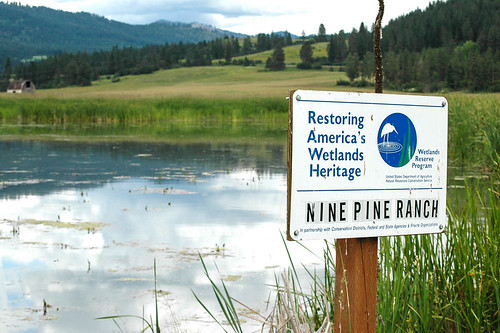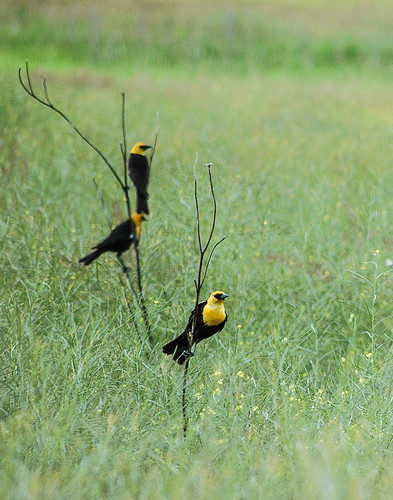
Most landowners would give up when faced with the challenges on Nine Pine Ranch near Chewelah, Washington, but not Glen Hafer. After trying for 40 years to farm his piece of land in the Colville River Valley, Hafer decided to convert it back to its original glory – wetlands.
Historically, the land in this valley flooded annually from the river, but settlers drained the area to farm. With no wetlands to hold water, flooding in the area worsened over time, making the land tough to farm.
When Hafer took the reins of his family’s land, he wanted to do something different. He was already – as he puts it – “semi-retired” and wanted to use his land to support his family.
Working first in the 1980s with USDA’s Natural Resources Conservation Service, then called the Soil Conservation Service, and USDA’s Farm Service Agency, Hafer put the land into a conservation easement through the Conservation Reserve Program. In a conservation easement, the landowner receives financial and technical assistance to help conserve agricultural lands and wetlands and their related benefits.
When Hafer’s CRP easement expired, he moved the land into a permanent easement in 2003 through the former Wetlands Reserve Program. The 2014 Farm Bill merged this easement program with others to form the Agricultural Conservation Easements Program, or ACEP. This week, USDA announced its plans to award to $328 million this year to private landowners across the nation to restore 32,000 acres of prime farmland, 45,000 acres of grasslands and 52,000 acres of wetlands.
Hafer’s family has owned this land for several generations, and he said it brings him pride to restore it to its historical condition.
Since that time, Hafer has worked with NRCS to install a wealth of conservation practices on his land to improve the quality of wildlife habitat on his land.
Some of these practices include building ponds, seeding native grasses to fight weeds and control erosion, enhancing wildlife habitat, restoring wetlands, and planting trees and shrubs.
Through a special agreement with NRCS, Hafer is still able to harvest hay on the easement, which pays the taxes on the land and to continue managing the land.
But Hafer said he is more interested in benefiting wildlife than padding his pocketbook. Thumbing through a large scrapbook of photos, he spoke enthusiastically of the variety of wildlife that has made a home on his land, including a herd of more than 100 elk.
Conservation benefits abound, including the dramatic increase in migratory waterfowl spotted frequenting the land since the inception of the easement. Bald eagles and other birds of prey hunt the area regularly and many song and migratory birds use the easement. He has also spotted sandpipers, blue egrets, quail, chipmunks and badgers.
Elk are also starting to inhabit the area, although more conifer trees are needed to maintain a sturdy presence. With NRCS’ help, Hafer said he plans to plant ponderosa pine trees to make his land more enticing to them.
Hafer said he will continue to do work on the easement for as long as NRCS will help him do so. Most recently, ACEP has enabled him to continue restoring the wetland areas on his land, including helping him strengthen levies, prevent erosion and improve hydrology.
With the hope this work will continue to make his land a better home for wildlife, he said, who knows what he’ll see next?
This September, USDA is celebrating the many opportunities and benefits provided by conservation by highlighting stories like this one. To get started with NRCS, visit your local USDA Service Center or www.nrcs.usda.gov/GetStarted.


